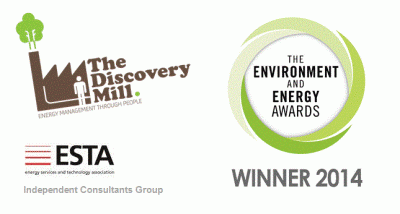MADE FOR THE ENVIRONMENT – A DOZEN THINGS NOT TO DO
This piece welcomes Beverley Lister, from Beverley Lister Associates, to our team of Associates and Champions.
Normally for construction projects, Beverley and I use checklists of best practice ‘things to do’. Here we thought we would turn this thinking on its head and consider a dozen things for your environmental conscience NOT to do when designing and constructing new facilities.
OPERABILITY – making it easier for building operators
Don’t just buy the ‘cheapest’. Thinking about investing in assets for large construction projects is just like investing in something at home; it has to be about delivering best value over its life. ‘Buying the cheapest’ often leads to very high operating costs and environmental impact; a serious sting in the tail passed onto those operating the facility! Taking an example from home, I use often, that we all know and love – buying a compact fluorescent lamp (CFL) will not only help abate environmental issues, compared to tungsten light bulbs (three CFLs will save over one tonne of CO2 emissions over their lives), but in addition it will NOT carry any extra cost; there is money to be made out of the deal when you look over its life – it’s a ‘Win Win’. Of course, for best value, you also need to make sure you have purchased the right CFL that’s good enough at producing the right amount of light and colour for the task at hand.
Don’t forget the power of daylight. Building users love daylight. Light shelves are one way to increase light diffusion by redirecting and more evenly distributing daylight entering a building through a side window. Light bounces off the reflective surface of the shelf and subsequently off the ceiling to create a more even brightness, reducing the need for electric lighting and enhancing visual comfort. Sun pipes enable natural light to penetrate deep within a building, by bouncing off the reflective sides of the pipe. They are usually used to transfer light vertically, but with the right pipes, they can bend light around corners, saving on electric lighting costs, improving building aesthetics and visual comfort.
Don’t forget the power of passive solar heating. Although it has its limitations, passive solar heating through direct gains provides a cost effective means of heating smaller buildings with an east-west axis. During winter, sunlight enters the building through south facing windows, heating a thermal mass (such as a concrete floor, wall or brickwork). This heat is stored and released into the building during the evening. During summer, the solar radiation can be blocked through the use of blinds or deciduous landscaping and together with night ventilation taking account of the prevailing wind direction, will help to prevent the building from overheating in the summer months.
Indirect heat gains work in a similar way but utilise a thermal storage mass such as a heavy masonry, concrete, or water storage wall. Solar radiation heats up the external surface of the wall and heat is conducted through the mass to the interior of the building where it is released during the evening to warm the cooler night time air.
Don’t overcomplicate the Part L Building Logbook. Building logbooks are required by Part L2 of the Building Regulations and aim to communicate operational information for management and operations teams in a simple though technical way. This includes the strategic intent for the various building services (i.e. heating, ventilation, air-conditioning, lighting etc) and associated advice on energy efficiency and environmental good practice. Logbooks should promote a continuous approach to performance improvement and energy optimisation and also can link to performance based operation and maintenance contracts for service suppliers.
We often see that building services and metering systems can easily become quite complex. If information systems are complex, they are just ignored. When control systems are complex, the temptation for building operators is to do the easiest thing for them and just switch them off. This country is littered with well-meaning good technology that is not working as intended. We need to make the technology simple, easy to use and easy to optimise. This means building a continuous improvement strategy based on a few control strategies replicated hundreds of times rather than designing in lots and lots of different types of systems and strategies. The odd adage rings true –‘keep it simple’.
Don’t ignore Operations teams when performing value engineering. The result can cause much resentment with operational teams, as they may not understand the decisions and priorities made. Often, we find that it’s the controls that are value engineered out, taking out a key part of operational strategy to optimise performance and environmental impact in response to changes in customer needs. Remember value engineering out controls often means higher operating cost, high environmental impact and reduced operability and flexibility.
Don’t forget to design in space for waste. Many companies have targets to reduce or recycle their waste. Making provision during design or refurbishment for a designated waste management area can help you achieve this and reduce waste to landfill, especially in serviced or shared buildings. The Landfill Directive requires that all mixed waste streams are pre-treated, for example through sorting and segregation prior to disposal. With landfill tax currently at £57 per tonne, and continuing to rise each year, having a designated waste management area to facilitate waste segregation and storage of recyclables or storage of reusable packaging will save money and help achieve waste reduction goals.
Don’t forget to pass on licences or consents to the Operations team on handover. Many construction related consents remain valid during the building or infrastructure operation, for example discharge consents for drainage ponds, emergency run off or foul drainage, or non-potable abstraction licences for landscape maintenance. These will need to be formally handed over to the new ‘consent owner’ who will be responsible for complying with the consent requirements, paying any annual fees and providing monitoring data to the Regulator.
CONSTRUCTION
Don’t forget to plan ahead for waste. Even small construction projects benefit from forward planning for waste. Site Waste Management Plans (SWMP) are a legal requirement for all construction projects over £300K but all sizes of projects will benefit from having one. The SWMP helps you to eliminate and reduce your waste and associated costs through good design and site practices. In preparing the plan you will think through each construction activity and identify the waste streams that you will encounter, so enabling you to consider the waste hierarchy of (eliminate, reduce, reuse, recycle) and ensuring that you comply with your duty of care for any waste that leaves your site.
Don’t ignore your environmental impact. Understanding the environmental impacts associated with your construction activities will help you to better manage your site, programme and costs. Before you start on site, draft an Environmental Management Plan and assign to someone with specific environmental responsibility, not forgetting that environmental good practice is everyone’s responsibility. Your first task is to identify each construction activity e.g. demolition, earthworks, refurbishment of buildings etc. Then think about the environmental impact of these activities such as release of dust, production of waste, use of natural resources such as aggregates. The next step is to put in place measures or controls to mitigate these impacts, e.g. use water bowers for dust suppression, salvage materials and recycle, or procure recycled aggregates etc. Knowing your environmental risk alongside your other project risks will help keep you on track in terms of programme, budget and legal compliance.
Don’t leave your tree removal and/or demolition works to chance. Know the ecological constraints when planning free works or demolition of buildings, bridges, culverts etc. It is illegal to disturb nesting birds or bat roosts, therefore ensure that you survey for these species prior to carrying out works. Avoid tree removal during the bird nesting season of March to August, works on bat maternity roost sites from mid-September to mid-May, and on hibernation roosts from mid-March until November. Other species and habitats are also protected such as water voles, badgers, some reptiles and amphibians so know your ecological constraints and include them in your project schedule.
Don’t forget to switch it off! There has been much debate about whether or not you should switch off your PC before leaving the office, but the consensus is a resounding YES! That also goes for lights, photocopiers, printers and phone chargers too. Even when in energy-saving and stand-by modes electronic equipment continues to consume energy. Think about the figures, if they are only used during the 8 hour working day, but left on all the time, that’s an astounding 6656 hours or 277 days per year that you could be saving electricity, which has got to make an impact on your energy bottom line!
Don’t leave your ethics at home. You may buy fair trade tea and recycled loo roll at home so bring these values into your office procurement activities. Switch to fair trade tea and coffee, buy recycled, FSC or PEFC office paper, flip charts, note books and toilet paper and other timber products, buy water based inks and products manufactured from post consumer waste. Reuse or recycle office furniture and IT equipment at your local furniture exchange, or ‘Freecycle’ it. Enquire as to the origin and ethics of component parts or any products that you manufacture or buy in; and ensure that your place of work provides a safe and pleasant environment for your fellow employees.
TO DISCOVER FOR YOURSELF
1. Interested in discussing what we can do for you – get in touch.
2. For more ideas, join our mailing list and/or subscribe to our RSS feed.


Comments